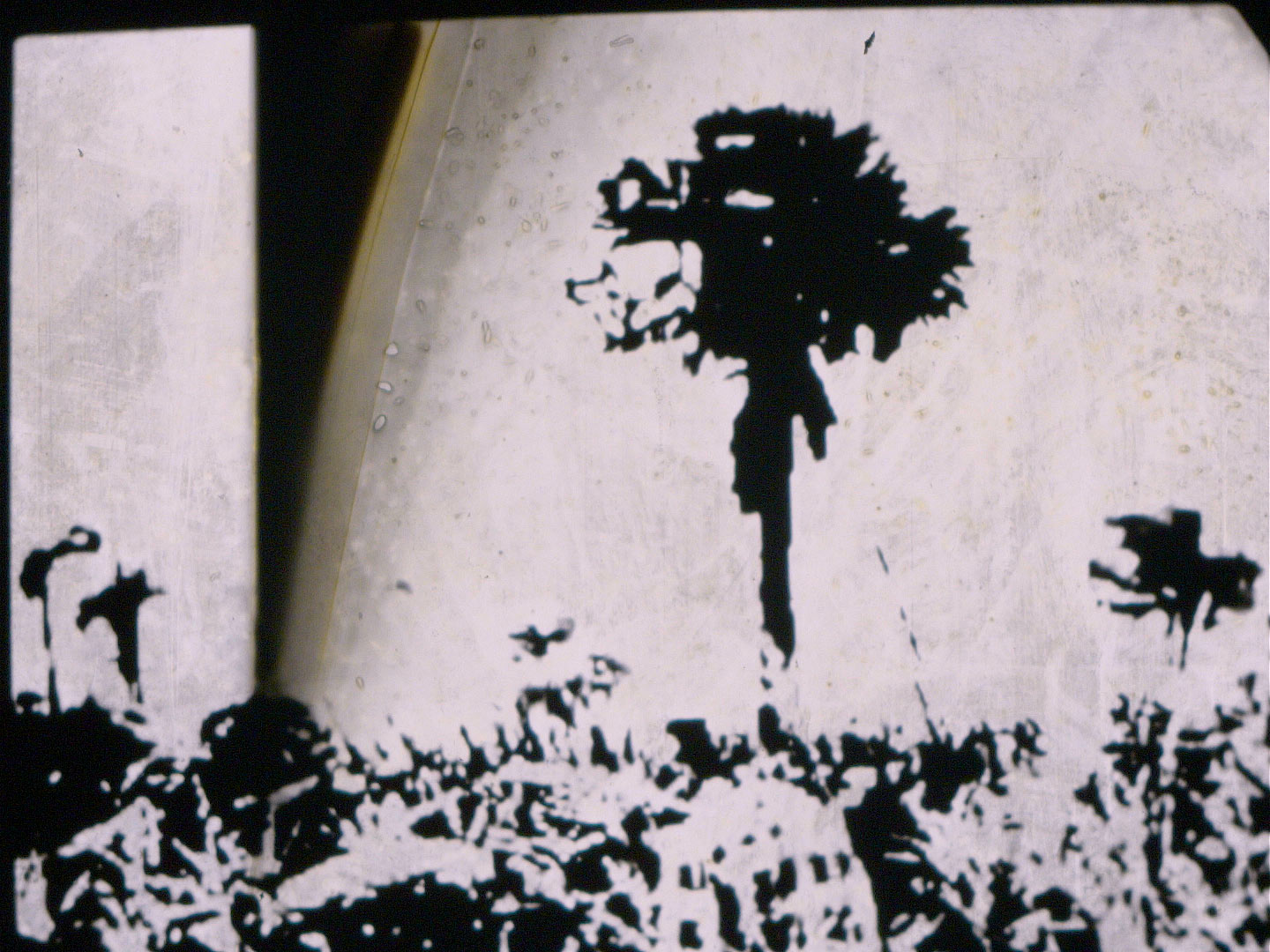Selection #10
67 mins
In attendance: Laurence Favre, Alisa Vostiklap
The programme deals with the entanglement crystallized in the term “Anthropocene” together with its ominous implications, unfolding a geography of critical points and altered states. From the Yukon river to the Mississippi, from a melting alpine glacier to the wetlands of the Everglades, we observe crumbling models of inhabiting the environment based on control and exploitation, on limits and levees. While troubling histories are silenced, swamped under murky waters, the voice of nature itself raises in a less and less hushed elemental turmoil. A story of floating traces following the thinning line between nature and history, where the cinematic medium offers novel ways of deciphering the landscape as well as listening to it.
T.I.
Unnatural History
67 mins
In attendance: Laurence Favre, Alisa Vostiklap
The programme deals with the entanglement crystallized in the term “Anthropocene” together with its ominous implications, unfolding a geography of critical points and altered states. From the Yukon river to the Mississippi, from a melting alpine glacier to the wetlands of the Everglades, we observe crumbling models of inhabiting the environment based on control and exploitation, on limits and levees. While troubling histories are silenced, swamped under murky waters, the voice of nature itself raises in a less and less hushed elemental turmoil. A story of floating traces following the thinning line between nature and history, where the cinematic medium offers novel ways of deciphering the landscape as well as listening to it.
T.I.
Sun 26 May
17:15h / ACUD STUDIOLaurence Favre
Resistance
Switzerland, 11’, 2017, 16mm, colour, sound

Resistance is a series of visual and sound impressions of a melting glacier. Beyond its majestic appearance sporadic elements reveal its fragility. Objects regurgitated through the melt witness the passing presence of mankind, leaving traces and scars. Never ending sounds of collapsing ice blocks under the weight of stones continuously reveal the symptoms of an evident decrease. This landscape that at first seemed motionless appears to be permanently changing. And yet in tension this magnificent and frightening body of ice and stones stands, impressive, resisting.
Alisa Vostiklap
Laughing fishes gave me a lift
Germany/Canada, 2018, 9’ 9’’, HD video, colour, sound, European Premiere

A sonic meditation on the vastness of the white expanse on the Yukon River, the punctual yet overarching human presence in this landscape, the dialogue between a personal, physical relationship that one is bound to have by living on this land and the unfading notion of a romantic wilderness associated with it. Laughing Fishes was initially conceived as a sound piece, a convolute of daily recordings made by going out onto the ice of the Yukon River; the images followed.
Sara Suarez
Watermarks
USA, 2018, 14’, HD video, colour, sound, European Premiere

Watermarks is a portrait of Richmond, Virginia. Where Confederate monuments adorn the land, the traumatic history of slavery along the James River remains largely unrecorded. As a narrator offers to guide us through contemporary landscapes, impressions of this buried world emerge through hand-developed 16mm film and unconventional sound design, questioning how the past is recorded or suppressed.
The burning of Richmond in 1865 closed the American Civil War. Confronted with the more powerful Union Army, the Confederates made bonfires of documents and records, then burned down their own capital and escaped across the river. The monuments, built decades after the war, were part of a white supremacist ideology known as the “Lost Cause”, a nostalgia that portrayed the pre-war South – and the cruelty of slavery – as honorable, just, and righteous.
Amanda Justice & Hogan Seidel
Let's Look at Florida
USA, 2018, 5’, 16mm, b/w, sound, European Premiere

The story of the attempted draining and development Florida can be told through a series of failures dating back to Andrew Hamilton. The land in the Everglades, specifically, has been unsuccessfully drained, flooded, and irrigated dozens of times throughout the years. "Let's Look at Florida" shows the state's history and present simultaneously. Floridians are trying to claim land that isn't theirs: by draining and developing it, hunting it and settling it.
Despite all of the inhabitants' best efforts - the land continues to swallow its own history.
Bill Brown
Life On The Mississippi
USA, 2018, 28’, 16mm > HD video, colour, sound, European Premiere

An essay film about a river and the limits of knowing it. Using Mark Twain’s "Life On The Mississippi" as a road map, Brown travels along the Mississippi River from Memphis, Tennessee to New Orleans and considers ways that river pilots, paddlers, historical re-enactors, and civil engineers attempt to know the river through modeling, measurement, and simulation.
SCHEDULE 2019
Thu 23
20:00h / ACUD STUDIO
Selection #1
Summoning Bell
21:15h / ACUD STUDIO
Live performance
Ojoboca
External Shudders
Fri 24
16:30h / ACUD HOF
Opening
Books, Magazines, Sound
Occulto Programme
17:00h / ACUD STUDIO
Selection #2
Through a Glass, Darkly
18:30h / ACUD STUDIO
Selection #3
Melodramas of Futility
19:30h / ACUD KINO
Selection #4
Photosynthesis (Alchemies of Light)
21:00h / ACUD KINO
Selection #5
Heterotopias
22:30h / ACUD KINO
Selection #6
Frameworks and Translations
Sat 25
15:00h / ACUD HOF
Panel Discussion
Occulto Programme
17:00h / ACUD STUDIO
Selection #7
Taxonomic Encounters
17:00h / ACUD HOF
Books, Magazines, Sound
Occulto Programme
18:30h / ACUD STUDIO
Selection #8
Echoes for Revival
20:00h / ACUD KINO
Special Programme
Expanded
Painlevé
23:00h / ACUD CLUB
Live Music & DjSet
Occulto Clubnight
Sun 26
13:00h / ACUD HOF
Books, Magazines, Sound
Occulto Programme
with brunch
16:00h / ACUD STUDIO
Selection #9
You Are Here
17:15h / ACUD STUDIO
Selection #10
Unnatural History
19:00h / ACUD KINO
Selection #11
Repeat / Replace
20:45h / ACUD KINO
Selection #12
Ghosts of the Market
22:00h / ACUD KINO
Selection #13
Notes on Gestures